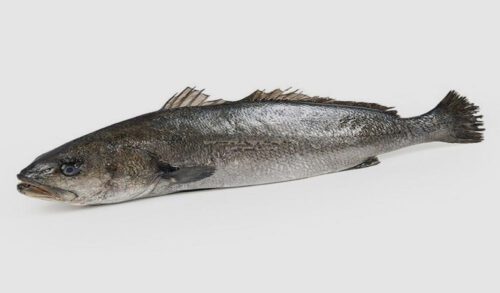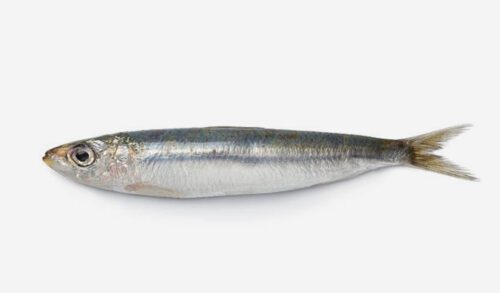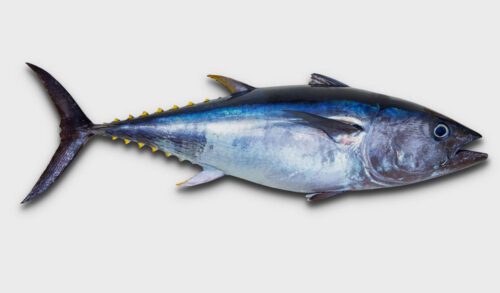-
 The croaker, with its slender profile and silvery skin, is a jewel of the seas. Its body is adorned with majestic fins and a mouth that reveals its predatory nature. This fish is known for both its beauty and its exquisite flavor. The croaker is found in temperate and warm waters worldwide, but its presence is particularly notable along the coasts of the Atlantic and Pacific Oceans. It is a skilled hunter, pursuing schools of smaller fish with impressive grace. Its flesh, white and firm, is highly valued in international gastronomy. Its flavor is delicate, with a subtle touch of salinity. It lends itself to a wide range of culinary preparations, from simple grilling to more complex dishes with creative sauces and marinades. Croaker fishing is a significant activity in many coastal communities, and its sustainable management is essential for maintaining the health of marine ecosystems. Fishermen cherish this fish not only for its culinary value but also for its role in the natural balance of the ocean.
The croaker, with its slender profile and silvery skin, is a jewel of the seas. Its body is adorned with majestic fins and a mouth that reveals its predatory nature. This fish is known for both its beauty and its exquisite flavor. The croaker is found in temperate and warm waters worldwide, but its presence is particularly notable along the coasts of the Atlantic and Pacific Oceans. It is a skilled hunter, pursuing schools of smaller fish with impressive grace. Its flesh, white and firm, is highly valued in international gastronomy. Its flavor is delicate, with a subtle touch of salinity. It lends itself to a wide range of culinary preparations, from simple grilling to more complex dishes with creative sauces and marinades. Croaker fishing is a significant activity in many coastal communities, and its sustainable management is essential for maintaining the health of marine ecosystems. Fishermen cherish this fish not only for its culinary value but also for its role in the natural balance of the ocean. -
 The ribbon fish, also known as the cutlassfish, is a marvel of marine life. Its body is elongated and flat, resembling a undulating ribbon in the water, and its pectoral fins resemble translucent wings. The most astonishing feature is its ability to change color and pattern, making it an oceanic chameleon. This splendid fish is found in tropical and subtropical waters around the world, with its preferred habitat being near coral reefs and rocky formations. It feeds on small fish and crustaceans, gliding gracefully among corals and crevices. Despite its beauty, the ribbon fish is shy and often seeks refuge in its natural surroundings. Its tranquil swimming and peaceful behavior make it a treasure for diving enthusiasts, who are fortunate to witness its elegant underwater dance.
The ribbon fish, also known as the cutlassfish, is a marvel of marine life. Its body is elongated and flat, resembling a undulating ribbon in the water, and its pectoral fins resemble translucent wings. The most astonishing feature is its ability to change color and pattern, making it an oceanic chameleon. This splendid fish is found in tropical and subtropical waters around the world, with its preferred habitat being near coral reefs and rocky formations. It feeds on small fish and crustaceans, gliding gracefully among corals and crevices. Despite its beauty, the ribbon fish is shy and often seeks refuge in its natural surroundings. Its tranquil swimming and peaceful behavior make it a treasure for diving enthusiasts, who are fortunate to witness its elegant underwater dance. -
 The sardine, that little silver fish, is a true culinary gem that has captivated Mediterranean cultures for centuries. Its slender body and glistening scales reflect the simple and elegant beauty of marine life. Sardines gather in large schools, offering an impressive sight as they swim in harmony. Their flesh is tender, and the taste is delightfully mild, with a subtle touch of oceanic saltiness. This fish is versatile in the kitchen, from being grilled with aromatic herbs to being marinated in olive oil and lemon in fresh Mediterranean salads. Sardines are also a rich source of omega-3 fatty acids and essential nutrients, promoting cardiovascular health and overall well-being. Sustainable fishing is crucial for maintaining the ecological balance of the seas, and many coastal communities have woven the capture and preparation of this humble yet prized fish into their culinary traditions.
The sardine, that little silver fish, is a true culinary gem that has captivated Mediterranean cultures for centuries. Its slender body and glistening scales reflect the simple and elegant beauty of marine life. Sardines gather in large schools, offering an impressive sight as they swim in harmony. Their flesh is tender, and the taste is delightfully mild, with a subtle touch of oceanic saltiness. This fish is versatile in the kitchen, from being grilled with aromatic herbs to being marinated in olive oil and lemon in fresh Mediterranean salads. Sardines are also a rich source of omega-3 fatty acids and essential nutrients, promoting cardiovascular health and overall well-being. Sustainable fishing is crucial for maintaining the ecological balance of the seas, and many coastal communities have woven the capture and preparation of this humble yet prized fish into their culinary traditions. -
 The tuna is a giant of the oceans, a true predator of the deep sea. Its sleek and muscular body, designed for speed and endurance, makes it one of the most iconic and prized fish in commercial fishing and gastronomy. This magnificent fish is found in warm and temperate waters worldwide, and its migration along ocean currents is astonishing. Its long, sharp fins allow it to reach impressive speeds, making it an exciting challenge for sport fishermen. Tuna is an invaluable source of high-quality protein and omega-3 fatty acids, making it an essential component of the diet in many cultures. Its meat is lean and mild in flavor, ideal for a variety of culinary preparations, from Japanese sashimi to Mediterranean grilled dishes. However, tuna fishing has posed conservation challenges due to overexploitation. Many organizations and governments work tirelessly to ensure the sustainability of tuna fishing and protect marine biodiversity. In summary, tuna is a symbol of the open seas and a source of essential nutrition that continues to captivate fishermen, chefs, and food enthusiasts worldwide.
The tuna is a giant of the oceans, a true predator of the deep sea. Its sleek and muscular body, designed for speed and endurance, makes it one of the most iconic and prized fish in commercial fishing and gastronomy. This magnificent fish is found in warm and temperate waters worldwide, and its migration along ocean currents is astonishing. Its long, sharp fins allow it to reach impressive speeds, making it an exciting challenge for sport fishermen. Tuna is an invaluable source of high-quality protein and omega-3 fatty acids, making it an essential component of the diet in many cultures. Its meat is lean and mild in flavor, ideal for a variety of culinary preparations, from Japanese sashimi to Mediterranean grilled dishes. However, tuna fishing has posed conservation challenges due to overexploitation. Many organizations and governments work tirelessly to ensure the sustainability of tuna fishing and protect marine biodiversity. In summary, tuna is a symbol of the open seas and a source of essential nutrition that continues to captivate fishermen, chefs, and food enthusiasts worldwide.
